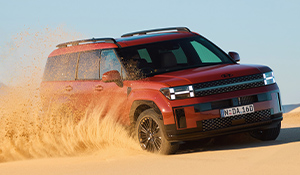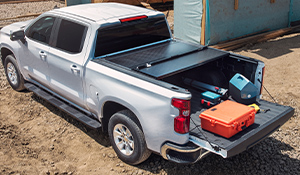BMW X3 take mid-size luxury SUV fight up to Audi Q5
Armed with more standard and optional technology, greater exterior size, more interior space and better value for money, two of the three models cost less to own.
As well as all this, the engines have more power and they are more fuel efficient.
At 4648mm, the new Beemer is 83mm longer than the outgoing model, 28mm wider (now 1881mm) and at 1661mm it is 12mm taller. These figures mean the 2011 X3 is nearly as big as the original X5.
There is a 40/20/40 split-fold rear-seat arrangement and with the seats occupied, 550-litres of luggage space. This rises to a handy 1600-litres with the seat backs folded down.
Since its launch back in 2004, BMW dealers around the world have sold more than 610,000 X3s and Australia accounts for around 7400 of these.
For the new range, there are three models starting their moniker with xDrive. The entry-level offering is the $62,200 turbo-diesel-powered 20d and it is followed by the 28i at $71,900. The range-topper is the 30d turbo-diesel with its $74,900 price tag. All three have their engines mated with the latest eight-speed ZF automatic transmission.
The entry-level model's $62,200 pricing is unchanged (but it has its share of new standard goodies), the 28i's $71,900 asking price is $3400 below its predecessor's and despite coming standard with more than $10,000 worth of additional features, the 30d's $74,900 figure has actually been cut by $2500.
While the 20d and the 28i are set to arrive in local dealer showrooms, the 30d is still a couple of months away.
The 20d has under its bonnet a more powerful two-litre four-cylinder turbo-diesel engine that delivers maximum power of 135kW at 4000rpm and peak torque of 380Nm between 1750 and 2750rpm.
Audi claims a combined fuel-consumption figure of a pretty miserly 5.6-litres/100km and a CO2-emissions figure of a super clean 149g/km. These figures compare with the Q5's 6.8-litres and 179g/km.
Opt for the only petrol powered X3 in the range - the 28i - and you'll have at your disposal a three-litre straight-six engine that is good for 190kW at 6600rpm and 310Nm that is on tap between 2600 and 3000rpm.
This engine replaces both the 2.5 and 3.0-litre engines that were available with the outgoing X3. BMW claims that despite being 10kW and 5Nm less than the bigger of the two powerplants, the new model's "six" is actually 19-percent more powerful, two seconds faster to 100km/h and 8-percent less thirsty.
Buyers of the 30d version who are prepared to wait till mid-year can look forward to 190kW of power at 4000rpm and a thumping 560Nm of torque that is available between 2000 and 2750rpm.
In terms of exterior styling, the new X3 retains its looks with larger dimensions and front-and-rear body tweaks that endow it with a stronger road presence.
All the new X3s come with an impressive array of fancy technological goodies and the two diesel models have a BMW "first" - an idle/stop system for an automatic vehicle. All three versions are however fitted with a brake-energy-regeneration system that, unless they are braking or coasting, prevents battery charging.
Other across the range standard kit includes BMW's latest iDrive driver interface, a reversing camera, a high-resolution 6.5-inch colour screen, aluminium roof rails, USB audio and Bluetooth mobile-phone connectivity, dual-zone automatic climate-control air conditioning, electric power steering, and keyless entry.
In the electronic driver-aids department, the new X3 comes with a permanent four-wheel drive system that ensures variable torque distribution between the front and rear axles. The system is linked to the vehicle's dynamic stability control system and it manages and counteracts things if the car exhibits any tendency towards under or oversteer.
There is an all new suspension set-up that has noticeable improved ride and handling, and fuel saving electric power steering is a "first" for a BMW xDrive model.
The X3's DSC system includes dynamic traction control, dynamic brake control, cornering brake control, an automatic differential brake and hill-descent control.
Out on the road during the media launch drive program the two models we sampled - the 20d and the 28i - proved themselves to be impressive performers with excellent overall driving dynamics.
They sit nice and flat in corners, and their low rolling resistance run-flat tyres, working with the new suspension set-up, gave the car prodigious grip levels, even on the wet roads we encountered for much of the drive in the hinterland behind northern New South Wales and the Gold Coast.
For its part, the two-litre turbo-diesel version did its best work climbing hills and overtaking in third or fourth gears using manual shifting.
The three-litre petrol version also performed impressively and BMW engineers are to be commended for the fuel-economy gains and handling improvements they have achieved.
Both models are noticeably quieter and comfort levels have also been improved.
In summary, BMW has come out fighting and there is no doubt that new X3 has what it takes to claw back sales from its Q5 arch rival to keep things tough for Volvo's segment offering, the XC60.
IAN CRAWFORD











